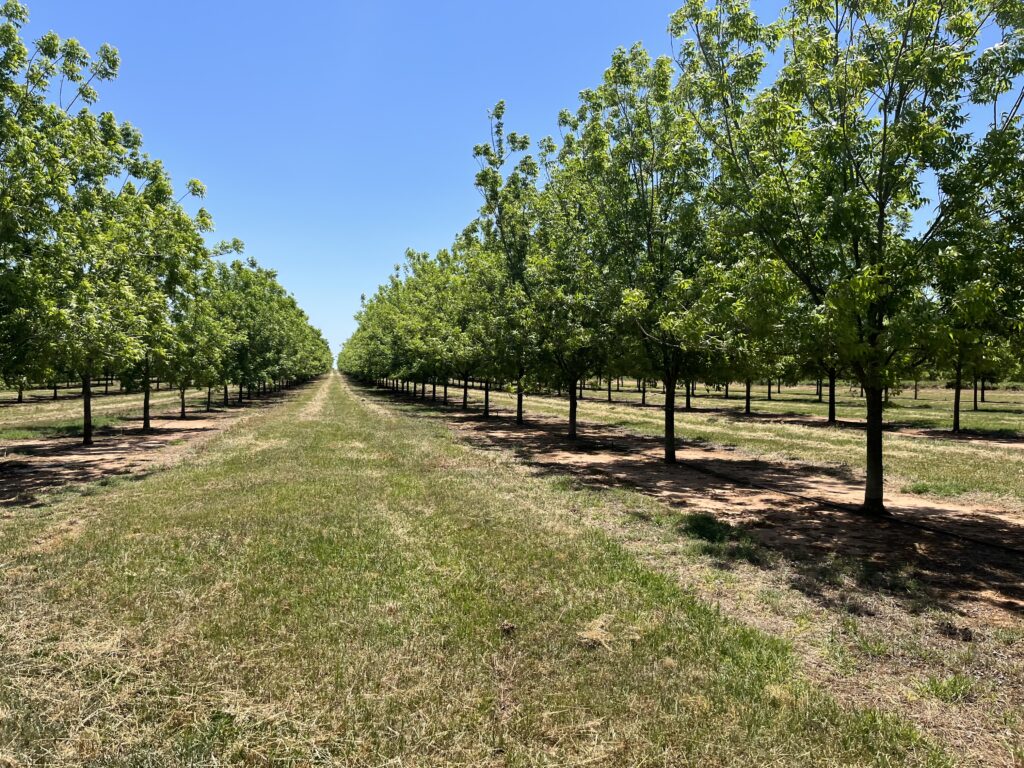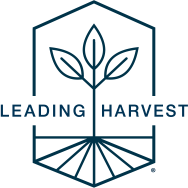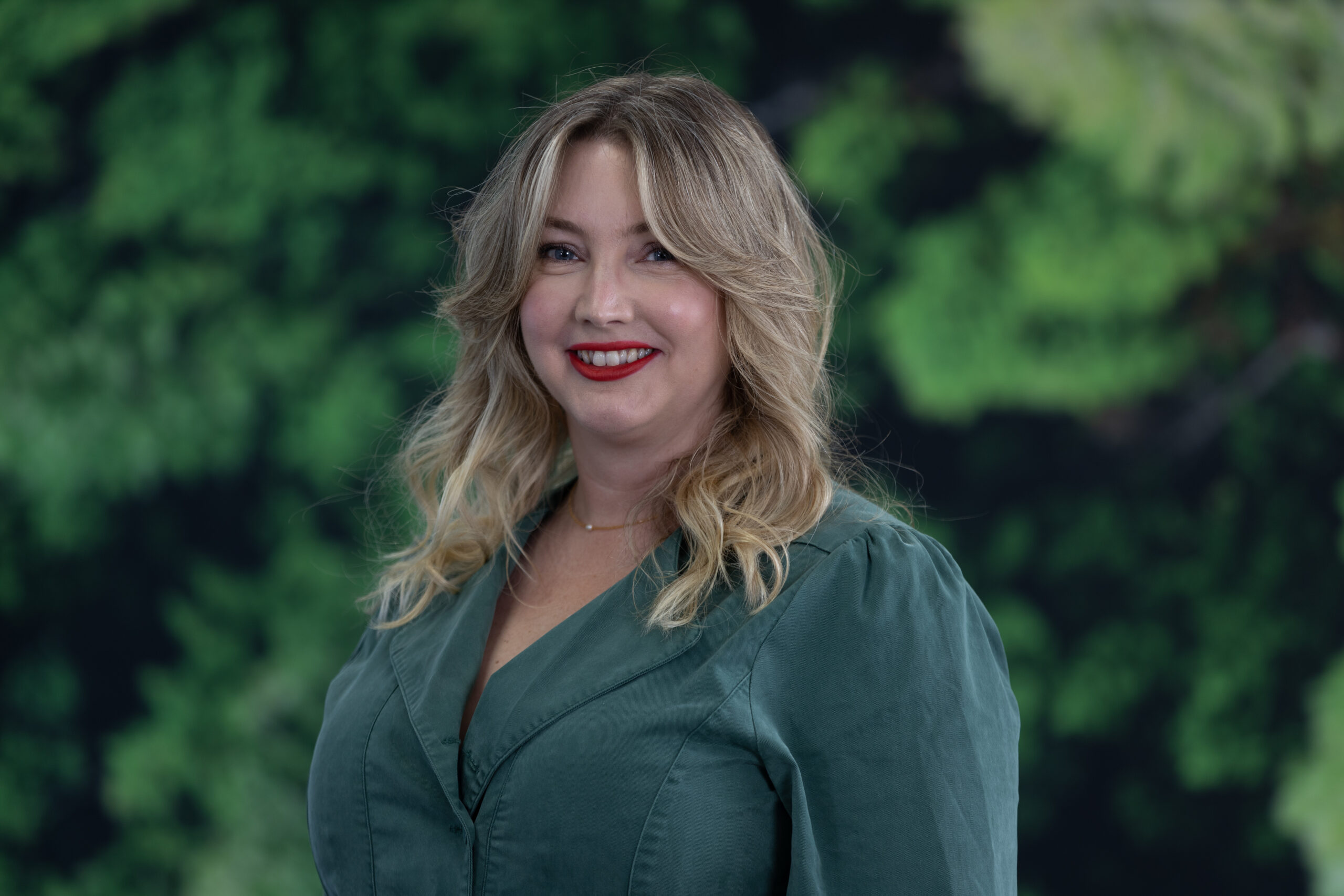Building an ESG Framework for Continuous Improvement
For institutional investors, sustainable farmland management is an important component of environmental, social, and governance (ESG) goals. Investors are increasingly looking to sustainability standards to help verify practices in their existing portfolio and make more informed decisions about where to invest in the future.
“When we promote soil and plant health through sustainable practices, we ensure the ability for an investment to generate strong production over a long period of time,” says Sarah Angus, Director of Portfolio Management and Agricultural Investments at the global asset management firm PGIM Real Estate. “When we reduce our use of water and chemical inputs through efficiencies, we reduce our expenses and can set up a property to be more resilient in light of climate factors.”
For Sarah’s team at PGIM Real Estate, it is critical to not simply state that they are adhering to a sustainability standard but to have a third party verify their farmland management systems.
“Being reviewed by a third-party adds a sense of strength to the process,” says Angus. “The third-party audit provides a sense of validity in the work we perform.”
But asset managers’ farmland portfolios are typically comprised of dozens of commodities and varieties located across geographies. Each property is unique, which requires an approach that can be applied seamlessly across a wide range of contexts.
“We chose Leading Harvest because it is one of the few sustainability certification programs that offers flexibility for application across different crop types and regions,” says Angus. “The Leading Harvest Standard is flexible enough to be applied broadly, and we wanted to adopt a framework across our entire portfolio.”
PGIM Real Estate has certified 100-percent of its managed acreage to the Leading Harvest Farmland Management Standard (LH Standard) over three years. Today, Angus says that conforming to the LH Standard has been critical to building PGIM Real Estate’s internal processes for documentation, evaluation, and continual improvement of its farmland management.

Aligning internal processes
Collecting uniform data is a challenge for the agriculture sector at large, and PGIM Real Estate’s wide range of properties is no exception. However, the LH Standard has provided a common framework for PGIM Real Estate managers, tenants, and service providers to organize around. This has led to better internal processes to collect documentation and data on what is working well across their diversity of properties.
“Certifying to the Leading Harvest Standard provides structure and documentation of our sustainability pathway,” says Angus. “Having a path of milestones as it relates to the Standard, combined with our enhancements made along the way, provides real evidence of our team’s efforts.”
The third-party audit, which is required for certification, has been the engine behind PGIM Real Estate’s continual improvement, says Angus, because it forces her team to evaluate their practices and organize broader goals around an annual deadline. It also provides the opportunity to reflect on the activities that have taken place over the course of the year, both within the organization and individual teams and at the property level.
“We get a great deal of value from the perspectives of our auditor, who identifies areas for improvement and areas of excellence in our practices,” says Angus. “The feedback from the audit process helps us to identify our goals for the future and to continue to make enhancements to our process.”
Localizing at scale
Because no two properties are the same, the best practices to increase sustainability at one property is likely different than another. Water profiles, for example, vary between drip irrigation widely used in California and micro-jet sprinklers in Florida. Different states will have different protocols and services available, causing further variance.
As an outcomes-based sustainability framework, the LH Standard allows PGIM Real Estate to take a localized approach to driving improvements. Each property manager can determine their own path toward sustainable outcomes – the path that works best for their unique operation.
“Going through the audit process crystallizes these differences and helps our team to understand how sustainability is truly property-specific within the agriculture space,” says Angus.
Rather than conforming to a checklist of rigid requirements, properties certifying to the LH Standard meet 13 core principles of sustainability, spanning soil health and conservation, local communities, waste and material management, employees and farm labor, and more. This has led to improvements across a broad range of sustainability objectives for PGIM Real Estate.
For example, PGIM Real Estate’s first certification audit identified an area for improvement around its consideration of endangered, threatened, and at-risk species. In response, Angus’s team developed an internal process for mapping properties using a tool from the U.S. Fish and Wildlife Service, which identifies at-risk, threatened, and endangered species that may be found in the vicinity. They created property profiles which highlighted the potential species, their status, description, and habitat, and created a classification system to identity those species most likely to be on each property.
This has served as an important educational tool to build awareness among Angus’s team, as well as with PGIM Real Estate on-site managers and tenants.

A foundation for ESG
Beyond the field, the LH Standard’s principles of sustainability have also provided the core of the PGIM Real Estate’s ESG strategy when it comes to farmland equity.
“Leading Harvest is a one-stop shop for our sustainability platform,” says Christopher Jay, Managing Director at PGIM Real Estate. “It’s a framework for everything.”
PGIM Real Estate’s farmland equity team built their internal ESG policies around the LH Standard’s 13 core principles. This alignment has provided a tool for evaluating their practices and finding areas where they can make improvements to their processes.
Now, Angus says that leadership has a top-down view of the team’s progress, which has been critical to deciding where to devote resources and ensuring continuous improvement for their ESG goals and objectives.
This ESG framework has served as an important communication tool. While PGIM Real Estate practiced many of the 13 core principles prior to enrolling with Leading Harvest, Jay and Angus lacked a coherent narrative about their efforts. But now, Jay and Angus frequently refer to principles 1 through 13 in conversation. They also have a concise story to share more broadly within PGIM Real Estate, which is largely a real estate investment business.
“It is nice to have this commitment to certification as an agricultural business within a broader real estate business,” says Angus. “Sustainability and the industry of sustainability around real estate is quite different than it is for agriculture. The Standard has provided a nice way of describing that and framing what we’re doing relative to the other parts of our business.”
A pathway for continuous improvement
Jay says that in year one of PGIM Real Estate’s enrollment with Leading Harvest, the team was primarily focused on validating their current practices and simply achieving certification. By year two, more processes were in place to document their good work, and the audit process allowed them to shift their focus towards specific areas of improvement. In year three, Angus and Jay successfully certified 100% of their acreage, which spanned a wide range of crop types and geographies.
Now, continuous improvement is a core component of their work.
“The Leading Harvest Standard has resulted in numerous improvements to our internal processes and on-the-farm management for each of the three years PGIM Real Estate been a participant,” says Angus.





